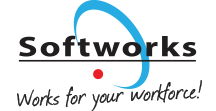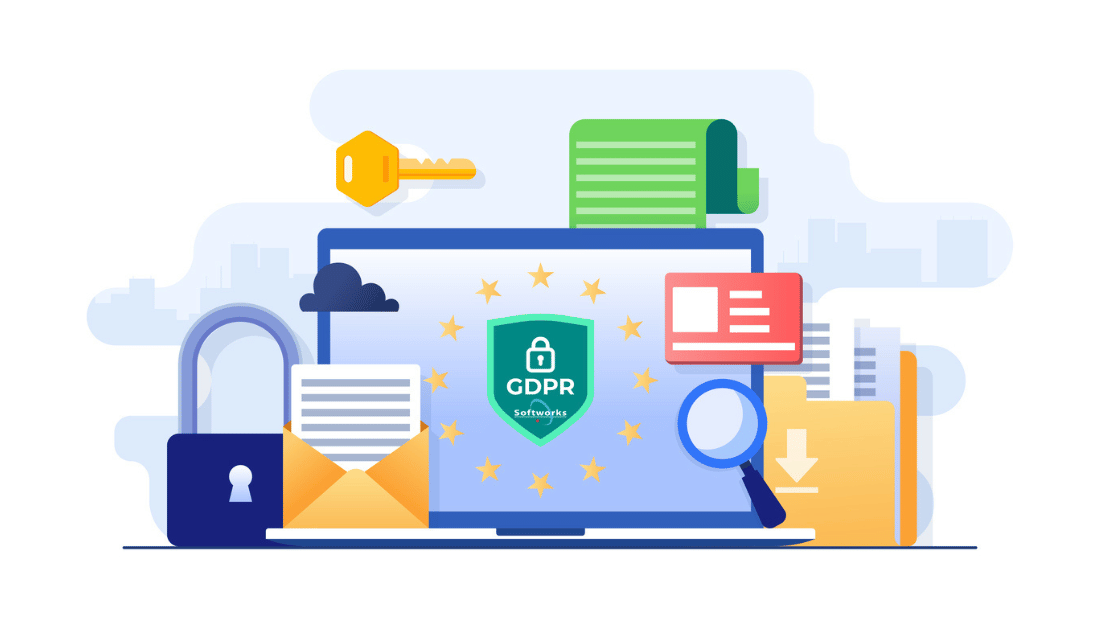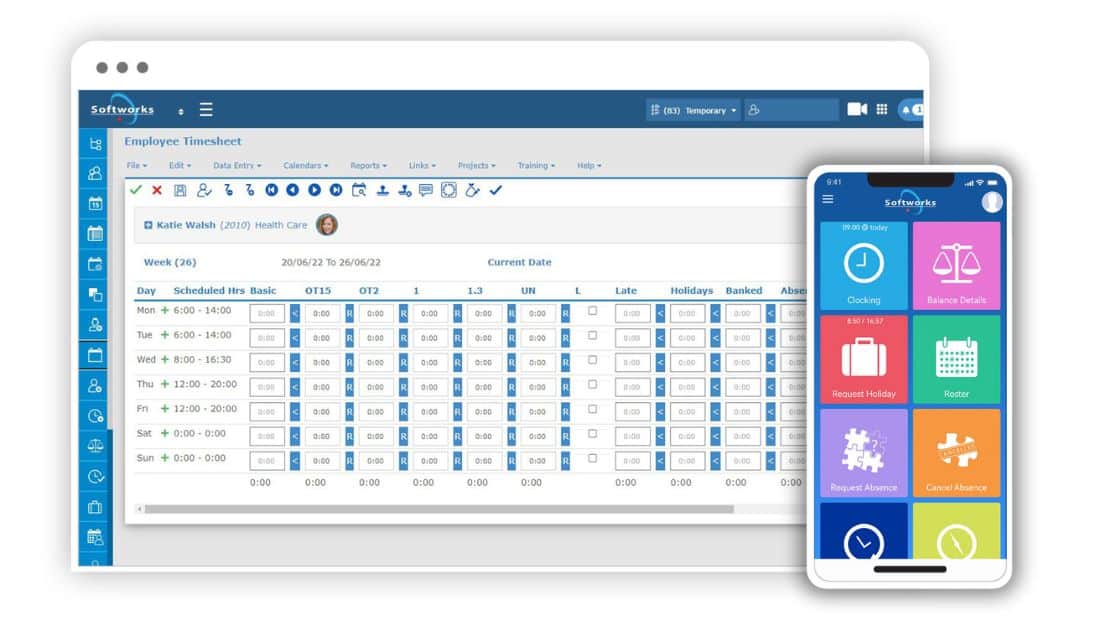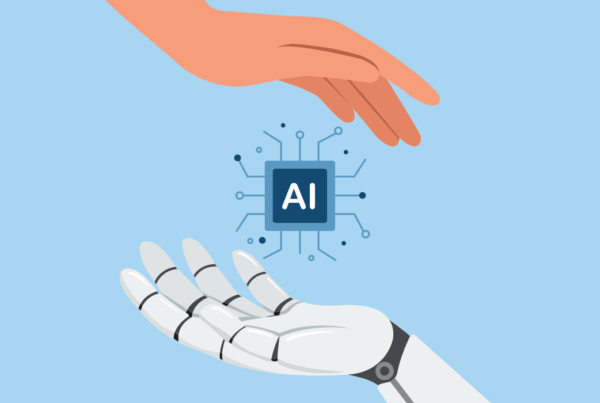The General Data Protection Regulation (GDPR), in effect since 25th May 2018, represents a significant advancement in personal data protection, impacting all organisations that manage the data of EU residents. Its principles, particularly “data protection by design and by default”, are of great relevance to time and attendance management systems, which process a considerable amount of personal information.
Key GDPR Principles Affecting Time and Attendance Data

The General Data Protection Regulation (GDPR) introduces a framework of principles designed to safeguard personal data. These principles not only guide the overall approach to privacy compliance but also have specific implications for managing time and attendance data. Understanding these principles is crucial for ensuring that time and attendance systems operate within the legal boundaries set by GDPR.
Overview of GDPR Principles
At its core, GDPR is built around several key principles that aim to enhance data protection and privacy:
- Lawfulness, Fairness, and Transparency: Data must be processed lawfully, fairly, and in a transparent manner about the data subject.
- Purpose Limitation: Data should be collected for specified, explicit, and legitimate purposes and not further processed in a manner that is outside of this..
- Data Minimisation: The collection of data should be limited to what is necessary in relation to the purposes for which they are processed.
- Accuracy: Personal data must be accurate and, where necessary, kept up to date.
- Storage Limitation: Data should be kept in a form which permits the identification of data subjects for no longer than is necessary and this timescale should be documented.
- Integrity and Confidentiality (Security): Data must be processed and stored in a manner that ensures appropriate security.
- Accountability: The data controller is responsible for, and must be able to demonstrate, compliance with the other principles.
Specific GDPR Principles Relevant to Time and Attendance Data
Several of these principles have direct implications for the handling of time and attendance data:
Data Minimisation
- Collect only the time and attendance data that is absolutely necessary for payroll, attendance tracking, or compliance with legal obligations.
- Avoid collecting unnecessary personal details that don’t serve a specific purpose.
Accuracy
- Ensure that time and attendance records are accurate and reflect the true working hours of employees.
- Implement mechanisms for employees to review and request corrections to their own data, fostering both accuracy and transparency.
Purpose Limitation
- Clearly define the purpose for collecting time and attendance data, such as managing work hours, ensuring accurate payroll processing, or complying with legal requirements.
- Avoid using this data for unrelated purposes, such as performance evaluation, without explicit consent or a legitimate reason.
Storage Limitation
- Retain time and attendance data only as long as necessary for the original purposes of payroll processing, compliance, or as required by law.
- Regularly review and securely delete data that is no longer needed.
The Impact of GDPR on Time and Attendance Systems
The introduction of the GDPR has significant implications for time and attendance systems used by employers. These systems, crucial for tracking employee hours, managing payroll, and ensuring operational efficiency, need to align with the strict data protection standards set by GDPR.
Data Collection under GDPR: What is Allowed?
- Consent and Legitimacy: Under GDPR, the collection of personal data via time and attendance systems must be justified by a legitimate interest, such as the necessity for payroll processing or compliance with employment laws. In certain cases, explicit consent from employees may be required, especially for processing sensitive data.
- Minimisation: Only the minimum necessary data for the intended purpose should be collected. For instance, while tracking attendance, only the time and date may be necessary, not the specific location within the premises unless it’s justified (e.g., for security reasons).
Storage and Processing of Time and Attendance Data
- Security Measures: GDPR mandates that personal data be stored securely using appropriate technical and organisational measures. This means that time and attendance data must be encrypted, access-controlled, and regularly audited to prevent unauthorized access or breaches.
- Data Processing Agreement (DPA): When outsourcing time and attendance tracking to third-party providers, companies must ensure that these providers are GDPR-compliant. This is typically achieved through a DPA, which outlines how data is to be handled, processed, and protected.
Rights of Employees under GDPR
GDPR grants several rights to individuals regarding their personal data, directly impacting how businesses manage time and attendance systems:
- Right of Access: Employees have the right to access their personal data, meaning they can request to see what time and attendance information is held about them. An Employee Self-service portal or an App is a great way to accommodate this.
- Right to Rectification: If the data collected is inaccurate or incomplete, employees can request corrections or completion. This ensures that time records are accurate, which is especially important for payroll.
- Right to Erasure (‘Right to be Forgotten’): Under certain conditions, employees can request the deletion of their data. For time and attendance systems, this might apply when the data is no longer necessary for the original purpose. For example in cases when an employee no longer works there.
- Right to Data Portability: This allows employees to request their data in a structured, commonly used, and machine-readable format, and to have this data transferred to another controller. It’s relevant if an employee switches employers and the new employer uses a different time and attendance system.
- Right to Object: Employees have the right to object to certain types of processing, such as processing for direct marketing purposes. In the context of time and attendance, this could relate to using the data for purposes beyond payroll and legal compliance without explicit consent.
The impact of GDPR on time and attendance systems is profound, requiring employers to critically assess and often overhaul their data collection, storage, and processing practices. This compliance effort, while challenging, ultimately fosters a culture of transparency and trust within the organization.
Legitimate Interest and Time Tracking under GDPR

Legitimate interest refers to the right of organizations to process personal data when they have a genuine and legitimate reason, including a business or commercial reason, to do so, provided that this is not outweighed by harm to the individual’s rights and interests.
In the context of time tracking, legitimate interest might involve ensuring accurate payroll processing, complying with employment laws, or protecting the safety and security of the workplace.
Examples of Legitimate Interests for Using Time Tracking Apps and Systems
- Accurate Payroll Processing: Ensuring that employees are paid accurately for the time they work is a fundamental requirement. Time-tracking systems facilitate this process, making it a legitimate interest.
- Compliance with Employment Laws: Many jurisdictions require employers to maintain accurate records of working hours to comply with labour laws, including those related to overtime and breaks.
- Workplace Safety and Security: Using biometric systems like fingerprint or facial recognition for clocking in and out can be justified by the need to secure access to premises, protect sensitive information, and ensure that only authorised personnel are present in certain areas and create an auditable trail of who had access when a problem arises.
Obligations for Informing Employees about Data Use
While GDPR allows for the processing of personal data under the legitimate interest clause, it also imposes obligations on employers to maintain transparency and protect individual rights:
- Transparency: Employers must inform their employees about the use of time-tracking systems. This includes what data is collected, how it is used, and the specific reasons why it is necessary.
- Privacy Notice: Typically, this information is provided through a privacy notice that is easily accessible, written in clear language, and specific to the context of employment.
- Right to Object: Employees have the right to object to the processing of their personal data based on legitimate interest. Employers need to provide a way for employees to express this objection and must consider each case individually to determine if the employee’s rights override the employer’s legitimate interests.
Understanding Roles: Data Controller, Data Processor, and Data Owner
In GDPR terms, understanding the roles of data controller, processor, and owner is essential for managing responsibilities and compliance.
- Data Controller: The entity (organization or individual) that decides why and how personal data is processed. They hold the primary responsibility for data protection compliance, including managing consent and responding to individuals’ rights over their data.
- Data Processor: A third party that processes personal data on behalf of the controller, based on their instructions. Processors might include services like cloud storage providers or payroll companies. While they don’t make decisions about the data processing purposes or means, they have GDPR obligations to ensure data security.
- Data Owner (Subject): Not a formal GDPR term but commonly refers to the individual whose data is being processed (known as the “data subject” in GDPR). They have rights under GDPR, including accessing their data, requesting corrections, and in some contexts, erasure.
Navigating GDPR Compliance: Practical Steps for Employers

Ensuring GDPR compliance for time and attendance systems involves a series of strategic steps designed to align data collection and management practices with GDPR mandates. Here’s a practical guide for businesses looking to navigate this process effectively.
Conducting a GDPR Audit for Your Time and Attendance System
- Identify Data Collection Points: Start by identifying all the points at which personal data is collected in your time and attendance system, including biometric data, if applicable.
- Assess Data Processing Activities: Evaluate how this data is processed, stored, and deleted. Ensure that each step aligns with GDPR requirements for data minimisation, purpose limitation, and data security.
- Review Data Sharing Practices: Examine if and how data is shared with third parties, such as payroll processing services, and ensure that these parties are also GDPR compliant by requesting a DPA or an addendum to the current contact.
Implementing GDPR-compliant Data Collection Practices
- Minimise Data Collection: Collect only the data that is strictly necessary for the purposes of managing time and attendance. For example, if biometric data is not essential, consider alternative methods.
- Obtain Consent When Necessary: If data collection extends beyond what is necessary for contract fulfilment or legal compliance, ensure that clear, informed consent is obtained from employees.
- Update Privacy Notices: Ensure that privacy notices clearly explain the purpose of data collection, how data is processed, and the rights of employees under GDPR.
Data Security Measures to Protect Time and Attendance Information
- Implement Technical and Organisational Measures: Use encryption, access controls, and other security measures to protect personal data from unauthorised access, alteration, and loss.
- Regular Security Audits: Conduct regular security audits of your time and attendance system to identify and rectify potential vulnerabilities.
- Data Breach Response Plan: Develop and implement a data breach response plan to ensure prompt action in the event of a security breach, in line with GDPR notification requirements.
Managing Access and Correction Requests from Employees
- Facilitate Rights to Access and Rectification: Implement procedures that allow employees to easily access their personal data and request corrections to any inaccuracies.
- Train Staff: Ensure that staff are trained to handle access and correction requests efficiently and in compliance with GDPR timelines.
Documentation and Record-Keeping for Compliance
- Maintain Records of Data Processing Activities: Keep detailed records of data processing activities, including the purpose of processing, data categories processed, and data retention periods.
- Document Compliance Efforts: Keep a record of GDPR compliance efforts, including audits, employee training sessions, and security measures implemented. This documentation can be crucial in demonstrating compliance to regulatory authorities if required.
Privacy Statement
Under GDPR, ensuring clarity and accessibility in your privacy statement is essential:
- Point of Contact: Include a specific point of contact in your privacy statement for individuals to inquire about their data rights.
- Service Level Agreements (SLAs): While not mandated by GDPR, SLAs clarify the roles and responsibilities between data controllers and processors, ensuring that GDPR compliance is maintained.
- Data Protection Officer (DPO): If your organization requires a DPO, include their contact details in the privacy statement. This makes it easier for individuals to address concerns or inquiries directly.
- Data Protection Authorities (DPAs): Providing a link to the relevant DPA in your jurisdiction can offer additional support to data subjects seeking to understand their rights or resolve issues.
Appointing a Data Protection Officer (DPO)
Under GDPR, the appointment of a Data Protection Officer (DPO) is mandatory for organisations that meet certain criteria. A DPO must be appointed if:
- The organisation is a public authority or body, except for courts acting in their judicial capacity.
- The core activities of the organisation require regular and systematic monitoring of data subjects on a large scale.
- The core activities consist of processing on a large scale of special categories of data (such as data revealing racial or ethnic origin, political opinions, religious beliefs, etc.) or data relating to criminal convictions and offences.
By following these practical steps, businesses can ensure that their time and attendance systems not only comply with GDPR but also bolster trust and transparency with their employees. This approach not only addresses legal obligations but also contributes to a culture of respect for personal data privacy within the organization.
Tips for Selecting A GDPR-Compliant Time Tracking Software
Selecting a time and attendance system that adheres to GDPR compliance requirements is crucial for businesses. This decision not only impacts the protection of employee data but also influences the overall GDPR compliance strategy of the organization. Here are key steps to ensure that your time-tracking software meets GDPR standards.
- Look for Built-in Compliance Features: Choose software that offers features supporting GDPR compliance, such as data encryption, access controls, audit logs, and the ability to easily respond to data subject requests (access, rectification, erasure).
- Evaluate Data Security Measures: Ensure that the software provider employs robust security measures, including secure data storage and transmission, regular security audits, and a clear data breach response protocol.
- Check for Third-Party Certifications: Look for software vendors that have obtained third-party certifications or attestations related to data security and privacy, indicating a commitment to maintaining high standards. For example ISO 27001 certification.
- Assess Data Processing Agreements (DPAs): If the software involves processing data outside your organization, ensure there is a DPA in place that specifies the responsibilities of the software provider as a data processor, aligning with GDPR requirements.
- Understand Data Storage Locations: Verify where the data will be stored and processed. Data centres located in the EU or in countries with adequate data protection levels are preferable to ensure compliance with cross-border data transfer rules under GDPR.
Selecting a GDPR-compliant time and attendance system is a strategic process that requires careful consideration of privacy and data protection features. By prioritizing GDPR compliance in the selection criteria, businesses can not only safeguard employee data but also integrate these systems seamlessly into their broader data protection strategies, ensuring compliance and fostering a culture of privacy within the organization.
Conclusion
The introduction of GDPR marked a pivotal change in how personal data, including time and attendance records, must be managed by organizations. It underscores the necessity of aligning time-tracking practices with strict privacy standards, emphasising transparency, data minimization, and security. For businesses, this means diligently auditing existing systems, adopting GDPR-compliant tools, and ensuring employees’ rights are respected, which is vital for maintaining trust and legal compliance.
Selecting the right time and attendance system is crucial; it should offer robust privacy and security features that meet GDPR standards. By doing so, organisations not only comply with regulatory requirements but also demonstrate a commitment to protecting employee data.
If you are looking for a GDPR-compliant Time and Attendance System make sure to request a demo of Softworks Time and Attendance.
Request a free Demo!
Take the first step towards a complete workforce management solution. Talk to us today!
About Deirdre Cannon
Deirdre Cannon is the Data Protection Officer at Softworks, playing a crucial role within the Softworks Analysis Team. Joining the company in 2013, Deirdre brought with her an impressive 17 years of experience in running a retail business, providing her with a unique perspective on customer service, data protection, and business management. As a qualified Accounts Technician, she not only excels in her meticulous attention to detail but also in her comprehensive understanding of the intricacies of data protection and analysis.
Deirdre’s assertive leadership and proactive approach have made significant contributions to the effectiveness and success of the Softworks Analysis Team. Her dedication to excellence in data protection is matched only by her commitment to mentoring her team, fostering an environment of continuous improvement and learning.
Outside of her professional life, Deirdre enjoys sharing insights on data protection trends, regulatory updates, and best practices, aiming to demystify the complexities of data protection for a wider audience through the Softworks blog.









Great article! I appreciate how you explained the implications of GDPR on time and attendance tracking. It’s crucial for companies to understand these regulations to protect employee data effectively.
This article provides valuable insights into how GDPR affects time and attendance tracking. It’s crucial for businesses to understand their responsibilities regarding employee data privacy. Thanks for sharing this information!
Great article! I found it very informative, especially the part about how GDPR impacts employee data. It’s essential for companies to stay compliant while managing attendance. Thanks for sharing!